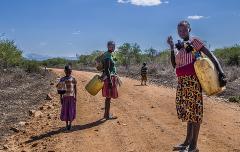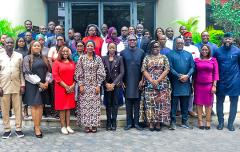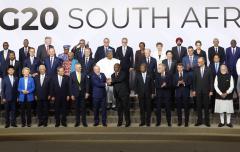Future-focused – with a dash of déjà vu: the Global Off Grid Solar Forum
As an advocate for decentralized renewable energy solutions to deliver electricity access, I’ve been engaged in this industry since it was in start-up mode in the mid-1990s. I’ve seen a tremendous amount of innovation, transformation and increasing documented impact over the past 25 years. I’ve also experienced episodes of déjà vu. Last month’s Global Off Grid Solar Forum in Hong Kong gave me a heavy dose of the former, and whiplash from the latter.
Compared to the 2016 forum, company and investor participation – in both formal sessions and hallway conversations – had a much more business and commercial tone. Notably, the discussion was focused on the growth trajectory of the private sector industry.
As highlighted in Sustainable Energy for All’s (SEforALL) recent Energizing Finance report series, less than 1% of the total financing committed to electricity access in 2013-2014 was targeted to decentralized solutions. The Off Grid Solar Market Trends Report 2018, launched at the forum, is a strong statement on the overall position of the industry, recognizing the dual reality that few companies are declaring profits, yet massive sums of new investment are needed.
This financing demand is happening as the off grid solar industry is struggling to meet both impact and return expectations placed on it by the global development and investment communities, a tension that has to be managed. If not, the worry is that grid proponents will cry out that the sector can never meet the energy access challenge and thus grid-scale solutions are, of course, the answer.
But as SEforALL CEO Rachel Kyte recently pointed out, the time has never been better to achieve energy access with decentralized solutions, especially in Africa where we are seeing examples of policy reforms that are working, investment climates that are attracting long-term financing and innovation that is poised to grow exponentially
While consumers and many of their civil society group advocates may not have been physically in the room at GOGLA forum, they presence was felt. They were the thread in many conversations around affordability of off grid solar for the ‘last-mile’ household, consumer protection principles, safety net approaches and social and development impacts achieved.
The imperative to leave no one behind was also strongly represented by the many World Bank and government representatives, as well as in forum content on how to best utilize public resources to increase access to electricity, particularly in last-mile communities and latent, frontier markets. The translation of development impacts achieved through off grid solutions into data to influence financial and policy decisions, the subject of Why Wait? Seizing the Energy Access Dividend, should further inform discussions on best use of public resources.
And this was one of those déjà vu moments for me. Addressing how to most efficiently use public resources to increase private investment to close energy access gaps has been a driver of my work over 25 years. There is strong agreement that public and philanthropic funding is needed to deploy energy access solutions and meet universal energy access goals – the private sector and market based approaches are not going to be able to deliver universal energy access alone.
In order for public and private investment to productively align, however, companies at the forum vociferously called for a seat at the table when public programs and subsidies are being designed and stressed that there be a clear examination on the impact of public interventions in nascent commercial markets.
And what is my expectation, as we look ahead? As the industry becomes better developed and more visible, as financing mechanisms for its various components become more familiar and accepted, as lenders and investors become more confident, and as economies of scale inevitably develop, it is likely that the use of solar home systems and other decentralized solutions will become significantly more widespread in emerging markets, especially in harder-to-reach remote areas.
This expectation is my most significant déjà vu moment. It’s as true now as it was at the Pocantico Conference on “Selling Solar” that I attended in 1995.
Perhaps today, with ever-cheaper solar technologies, emerging business models, the mobile revolution, efficient appliances, innovative financing, the reality on grid limitations and true public-private engagement, we can finally make déjà vu a thing of the past.




